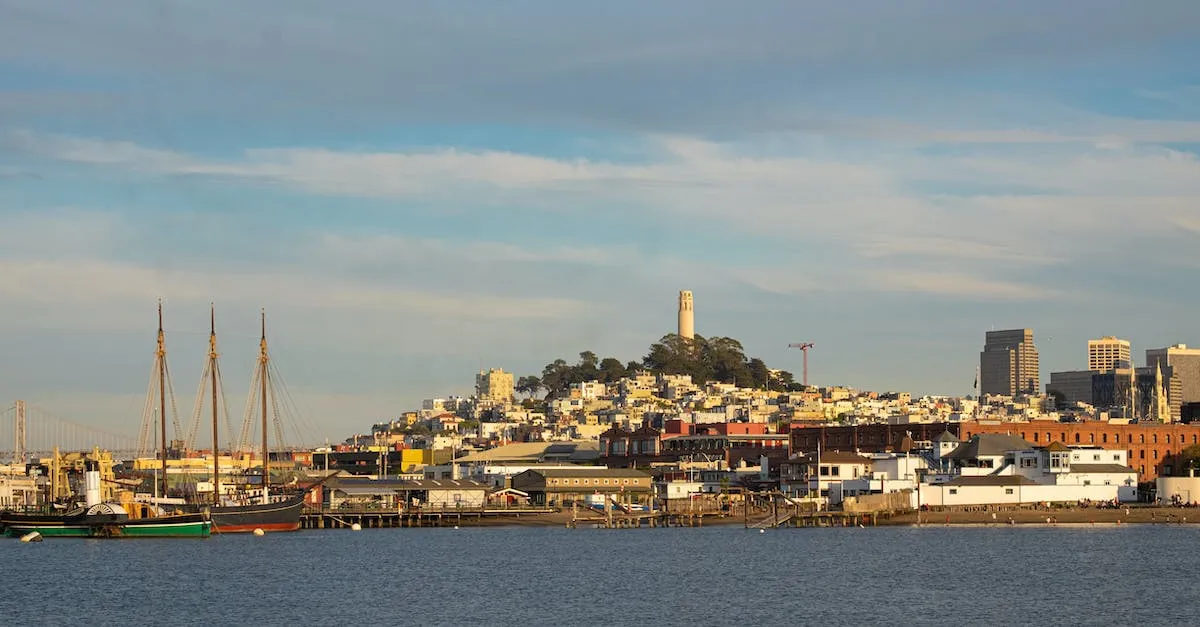The States That Border California – A Complete Guide
With its iconic beaches, towering mountains, fertile valleys and desert landscapes, California is one of the most diverse states in America. Its strategic position along the west coast and borders with neighboring states have shaped its history and identity.
If you’re short on time, here’s a quick answer: California shares borders with 3 other US states – Oregon to the north, Nevada to the east, and Arizona to the southeast.
In this comprehensive guide, we’ll explore everything you need to know about the states bordering California, including:
– Overview of each neighboring state
– Major cities and attractions near the borders
– Border crossings between California and neighboring states
– Impact on culture, commerce, and transportation
Oregon – California’s Northern Neighbor
Geography and Major Cities
Oregon is located to the north of California and shares a border that spans approximately 300 miles. The state is known for its diverse geography, ranging from the rugged coastline along the Pacific Ocean to the lush forests and volcanic peaks of the Cascade Range.
Some of the major cities in Oregon that are close to the California border include Portland, Eugene, and Medford.
Border Crossings and Attractions
There are several border crossings between California and Oregon, including the popular Interstate 5 route that connects major cities like Ashland and Medford in Oregon with Redding and Sacramento in California.
These border crossings not only facilitate travel and trade between the two states but also provide access to a variety of attractions.
One of the most famous attractions near the California-Oregon border is Crater Lake National Park, which is located in southern Oregon. This stunning natural wonder offers breathtaking views of a deep blue lake nestled within a volcanic crater.
Visitors can enjoy hiking, camping, and even boat tours in the summer months. Another notable attraction is the Oregon Shakespeare Festival, held in Ashland, where visitors can enjoy world-class theater performances.
Additionally, the border region is known for its outdoor recreational opportunities, including hiking, fishing, and skiing. The Cascade-Siskiyou National Monument, located near Ashland, is a great place for hiking and exploring the unique biodiversity of the region.
Cultural and Commercial Ties
Oregon and California share not only a physical border but also strong cultural and commercial ties. The two states have a long history of collaboration and exchange, particularly in areas such as technology, agriculture, and the arts.
Portland, Oregon’s largest city, is often referred to as the “Silicon Forest” due to its thriving tech industry. Many technology companies have headquarters or significant operations in both Oregon and California, fostering innovation and economic growth in the region.
Furthermore, the wine industries in both states have flourished, with California’s renowned Napa Valley and Oregon’s Willamette Valley producing some of the finest wines in the country. The border region also benefits from cross-state tourism, with visitors often exploring the wineries and vineyards on both sides of the border.
In terms of the arts, the film and entertainment industries in California have influenced Oregon’s own burgeoning film scene. Cities like Portland and Eugene have become popular filming locations for movies and TV shows, attracting both local and Hollywood talent.
Nevada – Sharing California’s Eastern Border
Nevada, the Silver State, shares its eastern border with California. This border stretches for approximately 401 miles, running from the southernmost point of California to the northeastern corner of the state.
Nevada is known for its stunning landscapes, including the iconic desert vistas of the Mojave Desert and the majestic peaks of the Sierra Nevada mountain range.
Key Cities and Regions along the Border
Along the California-Nevada border, you’ll find several key cities and regions that offer unique experiences for visitors. Reno, known as “The Biggest Little City in the World,” is located just east of the Sierra Nevada Mountains and offers a vibrant nightlife, world-class entertainment, and outdoor recreational activities.
Lake Tahoe, a popular tourist destination, spans the border between California and Nevada, providing breathtaking views, water sports, and skiing opportunities.
Other notable cities and regions along the border include South Lake Tahoe, a hub for outdoor enthusiasts with its stunning beaches and hiking trails, and Carson City, the capital of Nevada, which offers a rich history and cultural attractions.
Major Border Crossing Points
There are several major border crossing points between California and Nevada. One of the busiest is the Interstate 15, which connects Las Vegas, Nevada, with the city of Barstow, California. This route is heavily used by travelers seeking entertainment in Las Vegas or heading to California’s famous destinations like Los Angeles or San Diego.
Another important crossing point is the US Route 395, which runs along the eastern border of California and connects major cities such as Reno, Carson City, and Mammoth Lakes.
Connections through Business and Travel
The border between California and Nevada not only connects cities and regions, but it also facilitates significant business and travel connections. Many Californians frequently travel to Nevada for leisure activities, including gambling, entertainment, and outdoor adventures.
On the other hand, Nevada residents often visit California to explore its diverse landscapes, cultural attractions, and vibrant cities.
Additionally, the border region is home to numerous business collaborations and trade opportunities. The proximity of Nevada to California’s major economic centers, such as the Silicon Valley and Los Angeles, has led to the development of strong ties in various industries, including technology, entertainment, and tourism.
Arizona – California’s Southeastern Neighbor
Located in the southeastern region of California, Arizona shares a border with its western neighbor. The border between California and Arizona spans approximately 372 miles, making it one of the longest state borders in the United States.
Climate and Topography at the Border
The climate and topography at the California-Arizona border vary significantly. In California, the border region experiences a Mediterranean climate, characterized by mild, wet winters and hot, dry summers.
However, as you move eastward towards Arizona, the climate transitions into a desert climate, with scorching temperatures and minimal rainfall. The topography also changes, with California’s mountainous terrain gradually giving way to Arizona’s vast desert landscapes.
Border Towns and Attractions
Several towns and cities are situated along the California-Arizona border, each offering unique attractions and experiences. One notable border town is Yuma, Arizona, which is known for its rich history and diverse cultural heritage.
Yuma is home to the Yuma Territorial Prison State Historic Park, where visitors can explore the remains of a 19th-century prison and learn about its intriguing past.
Another popular destination along the border is Palm Springs, California, renowned for its luxurious resorts, world-class golf courses, and stunning desert scenery. Visitors can enjoy activities such as hiking in Joshua Tree National Park, exploring the Palm Springs Aerial Tramway, or indulging in spa treatments at one of the many renowned wellness retreats.
Migration and Commerce between California and Arizona
The border between California and Arizona sees significant migration and commerce activity. Many individuals and families migrate between the two states, seeking job opportunities, a different lifestyle, or simply a change of scenery.
This migration flow contributes to the cultural diversity and economic growth of both regions.
Furthermore, the California-Arizona border serves as a crucial gateway for trade and commerce. The transportation infrastructure, including highways and railways, facilitates the movement of goods and services between the two states.
California’s bustling ports, such as the Port of Los Angeles and the Port of Long Beach, serve as major hubs for international trade, allowing Arizona businesses to access global markets.
Conclusion
California’s borders with Oregon, Nevada and Arizona have played an integral role in shaping the state biologically, culturally, and economically. While diverse in climate and population, the exchange across these borders bind the states together.
Understanding the key cities, attractions and transportation corridors along these borders provides insights into the forces connecting California with its neighbors. From the Sierra Nevada to the Sonoran Desert, California’s borders tie it to the greater American West.








